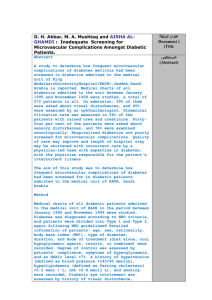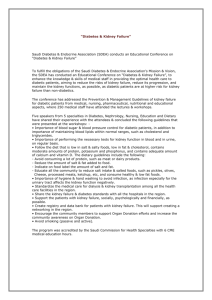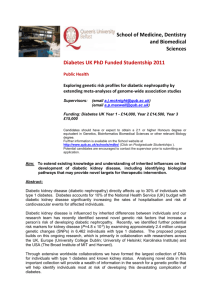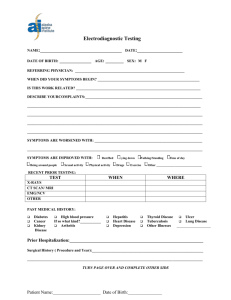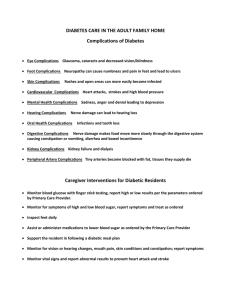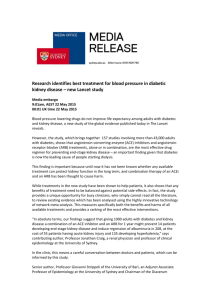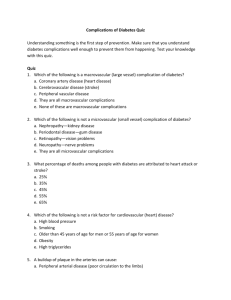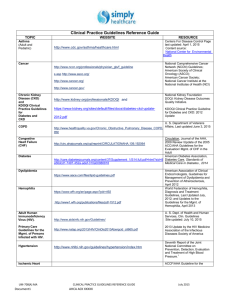Prevention of diabetes complications
advertisement
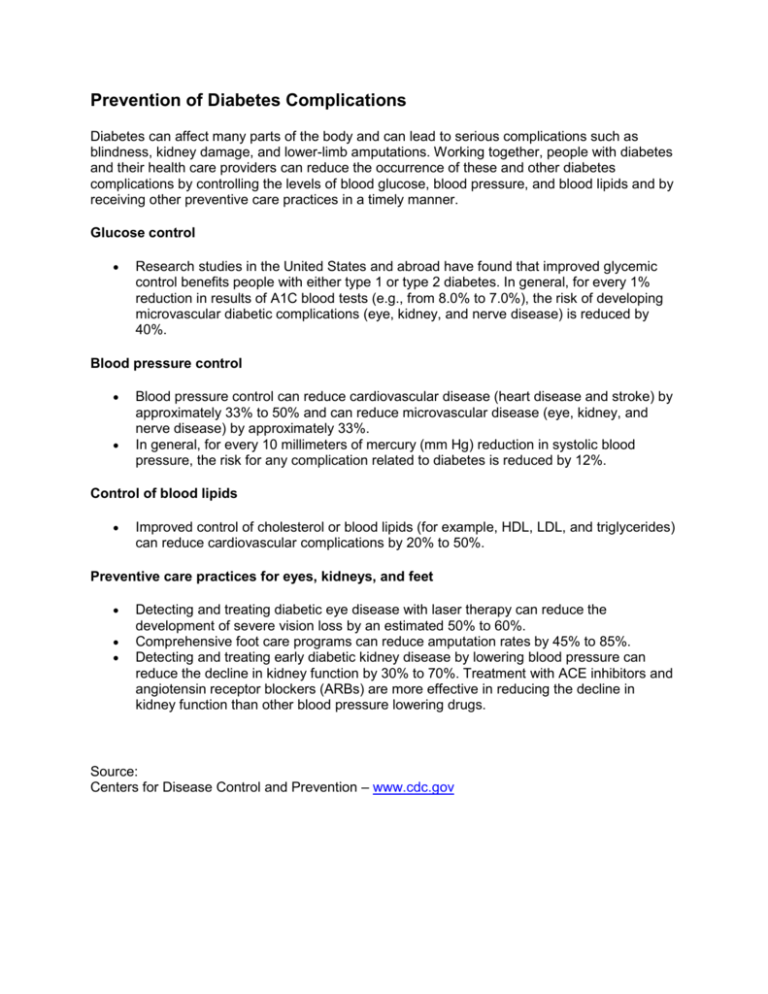
Prevention of Diabetes Complications Diabetes can affect many parts of the body and can lead to serious complications such as blindness, kidney damage, and lower-limb amputations. Working together, people with diabetes and their health care providers can reduce the occurrence of these and other diabetes complications by controlling the levels of blood glucose, blood pressure, and blood lipids and by receiving other preventive care practices in a timely manner. Glucose control Research studies in the United States and abroad have found that improved glycemic control benefits people with either type 1 or type 2 diabetes. In general, for every 1% reduction in results of A1C blood tests (e.g., from 8.0% to 7.0%), the risk of developing microvascular diabetic complications (eye, kidney, and nerve disease) is reduced by 40%. Blood pressure control Blood pressure control can reduce cardiovascular disease (heart disease and stroke) by approximately 33% to 50% and can reduce microvascular disease (eye, kidney, and nerve disease) by approximately 33%. In general, for every 10 millimeters of mercury (mm Hg) reduction in systolic blood pressure, the risk for any complication related to diabetes is reduced by 12%. Control of blood lipids Improved control of cholesterol or blood lipids (for example, HDL, LDL, and triglycerides) can reduce cardiovascular complications by 20% to 50%. Preventive care practices for eyes, kidneys, and feet Detecting and treating diabetic eye disease with laser therapy can reduce the development of severe vision loss by an estimated 50% to 60%. Comprehensive foot care programs can reduce amputation rates by 45% to 85%. Detecting and treating early diabetic kidney disease by lowering blood pressure can reduce the decline in kidney function by 30% to 70%. Treatment with ACE inhibitors and angiotensin receptor blockers (ARBs) are more effective in reducing the decline in kidney function than other blood pressure lowering drugs. Source: Centers for Disease Control and Prevention – www.cdc.gov
